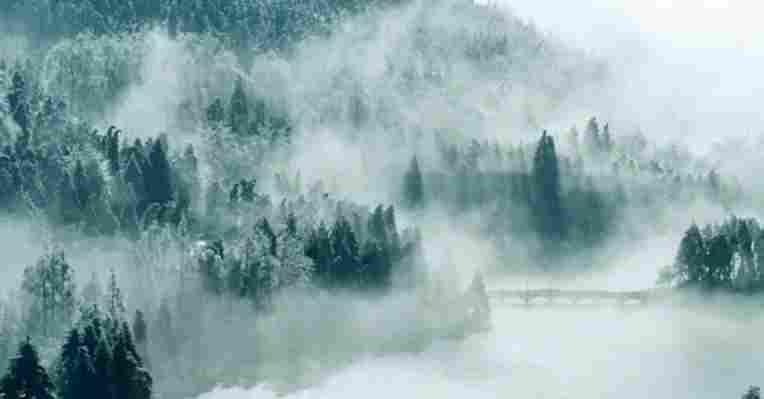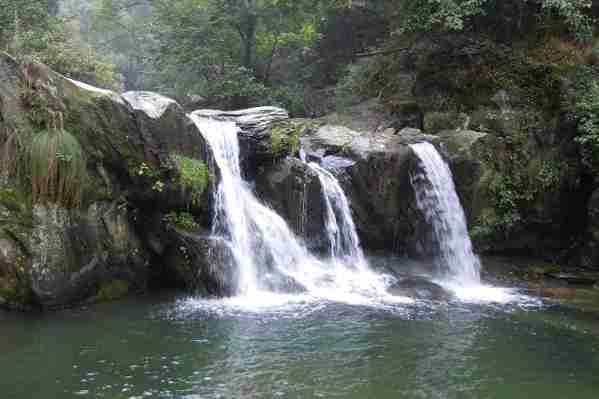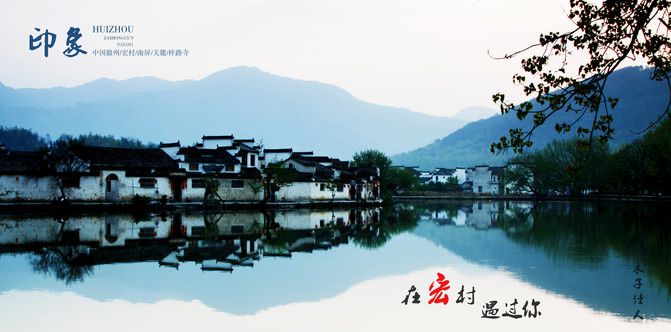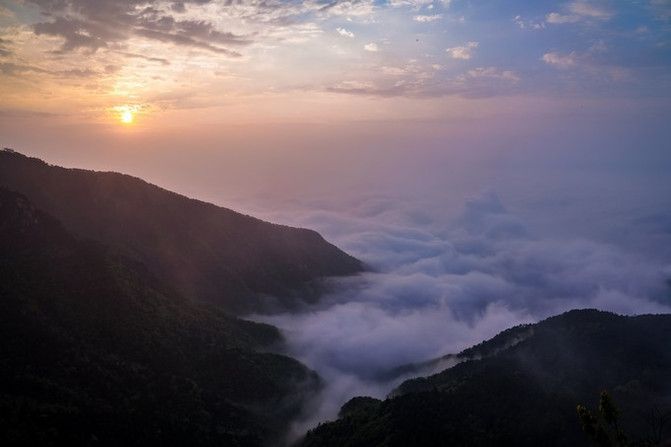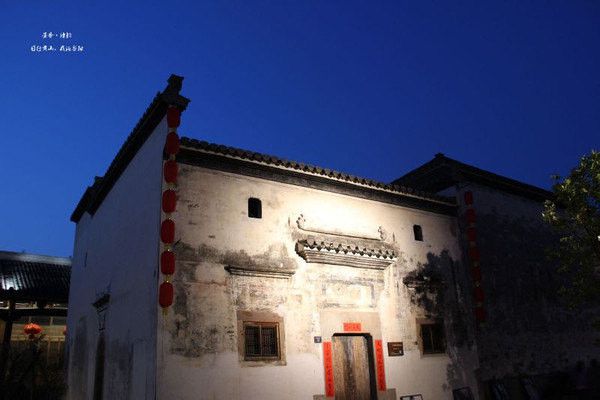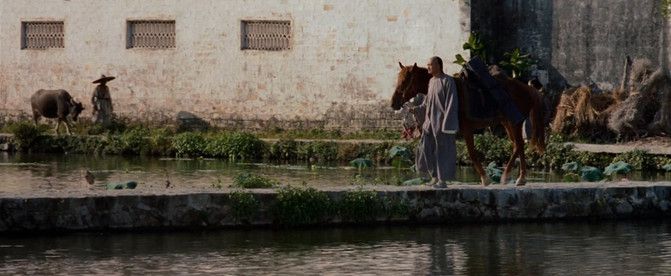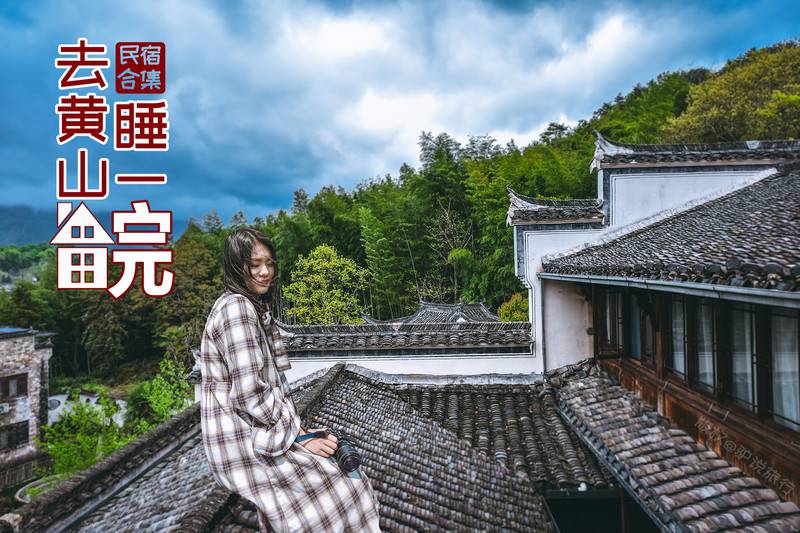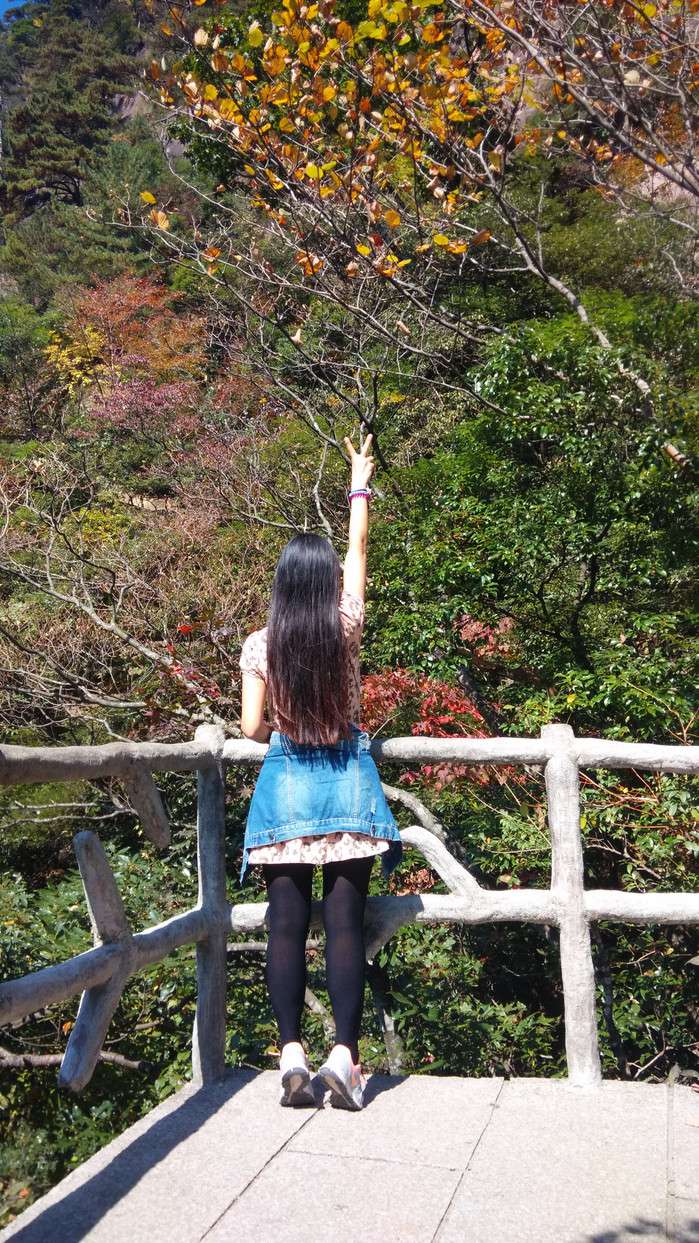July 03,2022 Post by :Ruoshui Chen
Facts About Lushan National Park: A UNESCO World Heritage SiteMount Lu National Park: Location, Features and Travel Tips
Mount Lu scenery Mount Lu scenery
This scenic mountain range is famous in China for its scenery and beauty and for its its history. It was a famed religious mountain in the past, and in modern times it is famous for its historical role in the lives of China's leaders. Now it is an excellent place to hike and sightsee in southeast China.
Mount Lu has been listed since 1996 as a UNESCO World Heritage Site. It is dotted with old temples and structures. A major plus for most tourists is that the park isn't yet as built up as other national parks in China, so you can enjoy some rugged scenery and hiking with less crowds.
Chinese 庐山 Lúshān 'Hut Mountain(s)'
Key features: Poorly maintained paths wind amid many small waterfalls, hundreds of peaks, sheer drops, scattered religious sites and historic places.
Poorly maintained paths wind amid many small waterfalls, hundreds of peaks, sheer drops, scattered religious sites and historic places. Highest peak: Dahanyang Peak (大汉阳峰) is 1,474 meters above sea level.
Dahanyang Peak (大汉阳峰) is 1,474 meters above sea level. Location: northern Jiangxi Province, about 100 kilometers from the capital Nanchang, and roughly 20 kilometers south of Jiujiang City.
northern Jiangxi Province, about 100 kilometers from the capital Nanchang, and roughly 20 kilometers south of Jiujiang City. Size: 25 by 10 kilometers
25 by 10 kilometers Recommended stay: half a day to two days depending on what you want to see or do
half a day to two days depending on what you want to see or do Activities: nature hiking and seeing historical sites. The locally produced tea is a good buy.
nature hiking and seeing historical sites. The locally produced tea is a good buy. Suitable for: hikers who want some solitude on weekdays or people wanting to sightsee around the local region. It isn't one of China's best natural parks.
Park Highlights
Just one of Mount Lu's many waterfalls Just one of Mount Lu's many waterfalls
Inspiring scenery: Numerous writers, poets, artists and calligraphers visited the mountains for inspiration. Over 900 cliff inscriptions and more than 300 tablets or steles with poems and couplets are testimonies to it's special place in ancient scholars' hearts. Mount Lu is therefore renowned as a cradle of Chinese landscape painting and literature.
Religious center: This was an important religious mountain in the dynastic eras. It also became a retreat center for foreign Christian missionaries in the 19th and 20th centuries who built buildings that are still used.
Academic center: Bailudong Academy (White Deer Cave Academy) is located on its slopes. It is one of the four most famous ancient academies in China. It was built in 940.
Wulao Peaks
The Wulao ('Five Old') Peaks at the southeast side of Mount Lu are famous. They rise to 1,436 meters. The peak is named after the fact that the summit of the peak, cut across by a mountain pass, is split into five separate peaks. Seen from the base of the mountain, the five peaks look like five old men sitting on the ground. The Wulao Peaks are the best venue on Mount Lu to watch the sunrise and sunset.
The five peaks have a different countenance when seen from different points of view. Some angles find fishermen fishing, while from others, they look like old monks sitting cross-legged. Of the five peaks, the second peak stands out the most because of its oddly-shaped rocks. The third peak is the most dangerous. The fourth peak is the most beautiful, and the fifth is open and relatively expansive.
At the foot of the Wulao Peaks lies the most famous sight on Mount Lu called the Three Step Waterfall. The waterfall spills over three natural terraces formed by glaciers en route to the pool below. It has a drop of 155 meters. It is considered one of the highlights of the mountain as is evidenced by the local saying that any visit to Mount Lu is incomplete without seeing the Three Step Waterfall.
Donglin Temple
Donglin Temple, located at the west foot of the mountain, was built by a monk called Hunyuan who founded the Jingtuzong sect of Buddhism during the Eastern Jin Dynasty. It is one of the oldest temples on the mountain with a history of over 1,600 years.
All the buildings of Donglin Temple follow a vertical center axis. Along the axis are the Temple Gate, the main hall, the Maitreya Hall and the Shenyun Hall. Flanking the main hall are halls for 500 Buddist arhats. Behind Sanxiao Hall is the Scripture Tower and Congming Spring. Viewed from a distance, the temple buildings in their green shades look majestic.
Touring Tips
Best months to visit: Summer is the best season to visit Mount Lu as the weather is very comfortable and the scenery at its best. It is known as a summer retreat area during sweltering weather. In April, the flowers and gardens are blooming, and the leaves turn color in October. The scenery is beautiful all year round though.
Summer is the best season to visit Mount Lu as the weather is very comfortable and the scenery at its best. It is known as a summer retreat area during sweltering weather. In April, the flowers and gardens are blooming, and the leaves turn color in October. The scenery is beautiful all year round though. Pricey: In addition to 180 RMB general entrance fee, there are entrance tickets for individual scenic places inside. For example, the Three Tier Waterfall area costs an additional 65 or 70 RMB (about 10 or 11 USD). On top of that, there are charges for cable rides, and the food inside is high priced.
In addition to 180 RMB general entrance fee, there are entrance tickets for individual scenic places inside. For example, the Three Tier Waterfall area costs an additional 65 or 70 RMB (about 10 or 11 USD). On top of that, there are charges for cable rides, and the food inside is high priced. Avoid the shops: There are shops that sell overly priced and factory produced souvenir goods. Other than the tea, there isn't much to shop for.
There are shops that sell overly priced and factory produced souvenir goods. Other than the tea, there isn't much to shop for. Avoid the crowds: To avoid the crowds, don't go on weekends and holidays . The crowding can get unpleasant and even dangerous on those days, but at other times, you can find yourself alone in beautiful places.
To avoid the crowds, . The crowding can get unpleasant and even on those days, but at other times, you can find yourself alone in beautiful places. Watch your step: Some of the sections of the trail have no guardrails. It is especially dangerous to be near a sheer drop amid a jostling crowd.
Some of the sections of the trail have no guardrails. It is especially dangerous to be near a sheer drop amid a jostling crowd. Weather and scenery: It is foggy for much of the year with around 192 days of fog on the mountain. Often, the fog impedes the view. Temperatures vary greatly between the base and peak.
It is foggy for much of the year with around 192 days of fog on the mountain. Often, the fog impedes the view. Temperatures vary greatly between the base and peak. Dampness: The rainy climate and fogginess makes the rocks slick and the hotel rooms feel damp. Wear shoes with good traction for the paths.
Essential Information
General admission tickets: April 1 to November 31 is 180 RMB (28 USD). From December 1 to March 31, it is 130 RMB.
April 1 to November 31 is 180 RMB (28 USD). From December 1 to March 31, it is 130 RMB. Free entry for seniors and kids: Adults over 70 years of age and children under 1.4 meters get in free.
Adults over 70 years of age and children under 1.4 meters get in free. Hours: 6 am to 6 pm.
6 am to 6 pm. Transport to park: A bus leaves the Long-distance Bus Station of Jiujiang City to Mount Lu every 30 minutes. It takes about an hour, and the cost is 9 RMB (1.40 USD). The last bus leaves about 3 PM.
Tour China's Most Beautiful Mountains with China Highlights
Our 7-Day China Fairyland Tour combines Jiuzhaigou with Mount Emei, two of China's most popular mountainous areas. Ask us, and we can add Mount Lu.
Check out our Natural Scenery Tours and China Hiking Tours, or contact us for a customized tour.
Lushan National Park
[Photo/Xinhua]
Category of site: Cultural Site
Brief introduction
Situated in the northern part of Jiangxi province, Lushan Mountain is one of China’s most renowned mountains. Lushan National Park, which was inscribed on the World Heritage List in 1996, is a prominent tourist attraction that lures millions of tourists each year.
Apart from its breathtaking natural scenery, Lushan is the birthplace of Chinese landscape poetry, plus, the famous Lushan Plenum represents its role in China’s political evolution. From another angle, Lushan used to be a summer resort for Western missionaries in China, which gave it a reputation for being a place for Western cultural intrusion into China. The heritage that makes up Lushan Mountain is so diverse that it is regarded as the national heritage of cultural landscape.
The Lushan National Park was added to the list in December, 1996.
History
Located in Jiujiang city, Jiangxi province, Lushan National Park covers a total area of 30,200 hectares and its highest Peak, Hanyang Peak, is 1,474 meters above sea level. Near the north by the Yangtze River and on the south by Poyang Lake, Lushan Mountain displays an integral scene of river, hills and lake, the beauty of which has attracted spiritual leaders, scholars, artists and writers for over 2,000 years. More than 200 historic buildings are situated in the Lushan National Park; complexes of prayer halls rebuilt and extended many times to create an ongoing centre for study and religion including the Buddhist East Grove Temple complex started by Huiyuan in 386 CE; the West Grove Pagoda found around 730 CE; the Temple of Simplicity and Tranquility begun during the Tang Dynasty as the repository of Taoist scriptures, and the White Deer Cave Academy originally built in 940 CE and revived in the late 12th century during the Song Dynasty when Zhu Xi instigated the spread of Confucius’ political and ethical teaching. It continued to be extended up to the 19th century to include many temples, study halls and libraries. Other important characteristics include the stone single-span Guan Ying Bridge of 1,015 CE and more than 900 inscriptions on cliffs and stone tablets. Besides, around 600 villas were built by Chinese and foreign visitors in the late 19th and 20th centuries, when the area became a popular resort and was, during the 1930s and 1940s the official Summer Capital of the Republic of China. The villas reflect various architectural patterns and are laid out within the landscape according to Western planning concepts prevalent at the time.
Cultural heritage
Lushan Mountain plays an important role in Chinese history and culture, since it is an exceptional representative of Chinese landscape culture, an outstanding model of Chinese academy-based education, and a focal point for the integration of Chinese and Western cultures, once serving as the cultural center of southern China. The significant cultural developments and political events of Lushan’s history have influenced the course of Chinese history.
The natural beauty of Lushan blend effortlessly with its historic buildings and features, creating a unique cultural landscape which embodies exceptional aesthetic value strongly associated with Chinese spiritual and cultural life. Combining nature and culture, Lushan Mountain displays the Chinese national spirit and epitomizes its cultural life.
Facts About Lushan National Park: A UNESCO World Heritage Site
Mount Lushan presents a beautiful confluence of hill, lake, and river; the beauty of which has attracted writers, artists, scholars, and spiritual leaders over the lengthy period of 2,000 years.
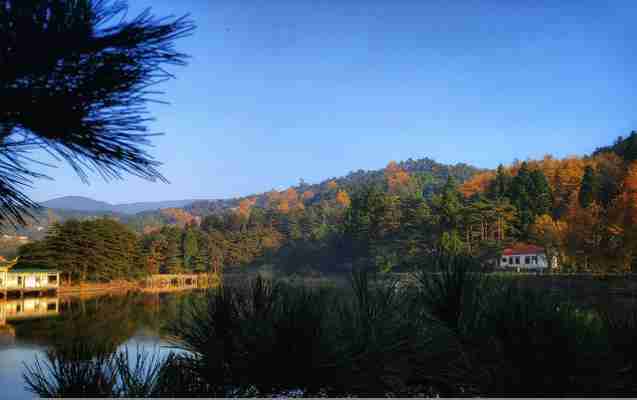
Lushan Mountain, located in Jiangxi Province's northern region, is one of China's most well-known mountains. Lushan is known as the birthplace of Chinese landscape poetry and the famous Lushan Plenum, which represents the city's role in China's political evolution.
From another perspective, Lushan was once a summer retreat for Western missionaries in China, earning it a reputation as a hotbed of Western cultural intrusion. Due to Lushan Mountain's cultural landscape legacy, it is designated as a World Heritage Site.
Geography
Lushan is located south of Jiujiang City in Jiangxi Province. It is located south of China's longest river, the Yangtze River, north of Tengwang Pavilion, east of the Beijing-Kowloon railway, and west of Poyang Lake, China's largest freshwater lake.
Lushan National Park has a property area of 74,626 ac (30,200 ha) and a buffer zone of 123,553 ac (50,000 ha). The buffer zone and property area contain all necessary elements for the formation of cultural heritage, as well as the presentation of its heritage values, such as historic buildings, ruins, modern villas, stone inscriptions, mountain vegetation, waterfalls, and streams, which display the cultural and natural elements of Chinese culture.
Natural Landmarks
Lushan National Park is 320 sq mi (500 sq km) in size and contains approximately 90 mountain summits. Hanyang Peak, which rises to a height of 4,833 ft (1,473 m), is the highest of these. Lushan is known for its ravines, waterfalls, grottoes, rocks, and rivulets, all of which are beautiful, elegant, steep, and stunning. There are 12 beautiful primary sites and 37 attractions, as well as approximately 900 cliff inscriptions and 300 steles. Wulao Feng, Sandie Spring, Lulin Lake, Flower Path, Ruqin Lake, Jinxiu Valley, Xianren Dong, and Donglin Temple are among the most significant attractions.
Wulao Feng is located to the southeast of the mountain, at 4,711 ft (1,436 m) above sea level. Its five parallel peaks formerly formed a single pinnacle and standing at the top rewards you with a breathtaking vista of faraway mountains, woods, lakes, and a limitless sky.
Wulao Feng is below Sandie Spring. With a drop of 509 ft (155 m), it passes over three rugged layers. The upper level looks like snow falling on the pond; the middle level wanders and twists, with splashing sprays dancing in the air; and the lower level looks like a jade dragon dashing through the pond. This is regarded as the most beautiful of the Lushan waterfalls. Due to its hidden location in a deep gully, it was not discovered until the Southern Song Dynasty (1127-1279).
Gu Ling town, in the heart of Lushan, is 3,819 ft (1,164 m) above sea level, surrounded on three sides by mountains and a valley on the fourth. Guniu Ling was the original name of Gu Ling because it resembles a bull. Gu Ling Street is 3,829 ft (1,167 m) long and is lined with shops, hotels, restaurants, booksellers, bars, coffee shops, and dance halls. Gu Ling's Center Park was built in 1954. It currently occupies 107,639 sq ft (10,000 sq m) after many restorations.
In the park, there is a big half-moon-shaped parterre,in which sits a massive stone bull, Gu Ling's symbol. He stands 2 m (7 ft) tall and is 4 m (13 ft) long. The dynamic ambiance of this wonderful site is enhanced by meandering walks, aromatic flowers, growing trees, and a pavilion.
Cultural Landmarks
As an outstanding representation of Chinese landscape culture, a great model of Chinese academy-based education, and a focal point for integration of Western and Chinese cultures, Lushan Mountain plays an important role in history and culture. It was once the cultural center of southern China. The historical events and significant cultural developments in Lushan have shaped the path of Chinese history.
Lushan's natural beauty blends seamlessly with its historic structures and features, resulting in a one-of-a-kind cultural landscape that epitomizes great aesthetic value, closely linked to the spiritual and cultural life of ancient China. Lushan Mountain, which combines nature and culture, exemplifies the Chinese national spirit and cultural life.
World Heritage Site
Countless celebrities have been through the park over the years. Over 4,000 poems and literary works have been left in the mountains as a result of this. The prestigious Bailudong Academy (White Deer Hole Academy), which was founded on the mountain in 940 AD, is one of China's four most prestigious ancient institutes. The Announce in the White Deer Hole Academy criterion of academies and institutions was created by Zhu Xi, a brilliant ideologist and educationist during the Song Dynasty (960-1279). His ideas inspired not just China, but also East Asia.
Other Miscellaneous Facts
Mount Lushan is said to be the Pure Land of five religions, which is unusual for any location. A Buddhist named Hui Yuan founded Donglin Temple in 391 AD and performed missionary work there for more than 36 years, allowing the mountain to become the heart of Buddhism in southern China. Taoism began to have a substantial impact in the 5th century when different Taoist temples were constructed. Churches of Christianity, Catholicism, and Islamism were built on the mountain during the Ming (1368-1644) and Qing Dynasties (1644-1911).
Hundreds of villas in various architectural styles from throughout the world have been properly preserved among the mountain. This site can only be seen in the Lushan Mountains and is one of a kind in China.
Visitors can easily take the cable car up to Mount Lushan, from where they can choose between a variety of paths to explore. Hanpo Pass is one of the most beautiful places in Lushan National Park. From here, you can stare down from above the clouds and see the gleaming Poyang Lake. The Three-Step Waterfall is another attraction in the area, with massive quantities of water cascading down two outlying steps.
FAQs
What is Lushan National Park known for?
Any path from the village of Lushan will lead you into the wilds of one of the province's most ethereal settings. The odd rock formations that seem to be perpetually blanketed in clouds are the most famous feature of Lushan National Park. There are innumerable hiking trails that are very well-marked and often paved for convenience. When you get to the bottom of the mountain, you must pay to enter; all lodging, restaurants, and hiking paths are located at the summit. Lushan Mountain's limitless attractiveness includes stunning blue-green peaks, spectacular silvery-white waterfalls, and a magical, wondrous sea of clouds. Lushan Mountain is a popular summer resort and scenic site, recognized for its pleasant weather in the summer and spring.
Where is Lushan National Park located?
Mount Lu or Lushan, also known as Kuanglu in ancient times, is located in Jiangxi Province, Central China, and is one of the country's most well-known mountains. Although the northern portions are found in Lianxi District, which was once known as Lushan District and covered the majority of Mount Lu until 2016, it is predominantly located in Lushan county-level city in Jiujiang Prefecture.
How old is Lushan National Park?
There is no specific date available, but it is several centuries old.
What is the significance of Lushan National Park?
Lushan National Park is known for more than just its natural beauty. The entire area is a culturally significant location in China. The grandeur of the national park has inspired generations of spiritualists throughout Chinese history. Around the 4th century AD, the Buddhist East Grove Temple was established in the Lushan National Park. Temples were established during the Tang dynasty to house some of Taoism's most important scriptures, while the White Deer Cave Academy served as a center for Confucius' political and ethical teachings until the 19th century. The panoramas later sparked a rebirth in landscape art in the 19th and 20th centuries. The Lushan Museum, located near Lulin Lake, just north of the Yangtze, houses original artifacts from the region's ancient and mysterious cultures.
When and why was the Lushan National Park declared as a World Heritage Site?
Lushan's natural beauty blends seamlessly with its historic structures and features, resulting in a one-of-a-kind cultural landscape that exhibits excellent aesthetic value strongly linked to Chinese spiritual and cultural life. Major schools of Chinese thinking, such as Taoism and Confucianism, have important centers hidden within the mystical landscapes. Lushan National Park has been a certified UNESCO World Heritage Site since 1996 for this reason and is a must-see for Chinese tourists and visitors from across the globe.
